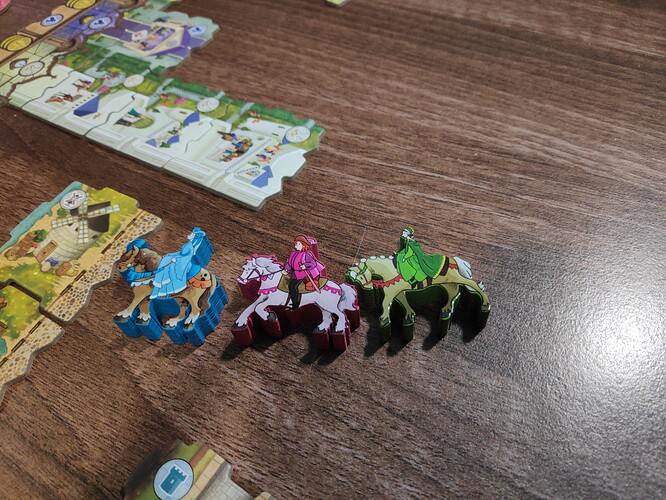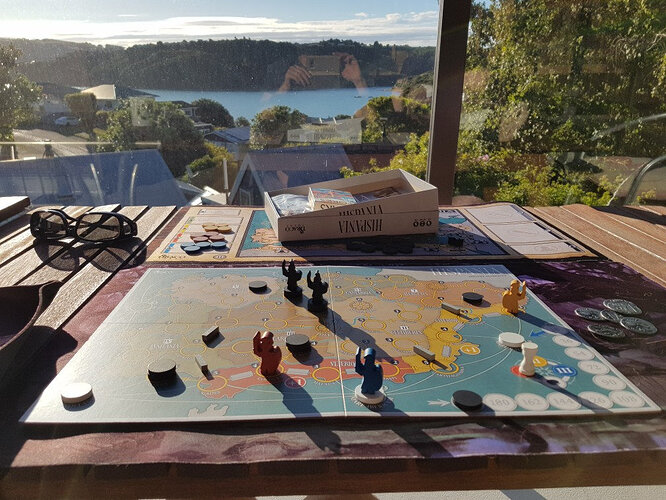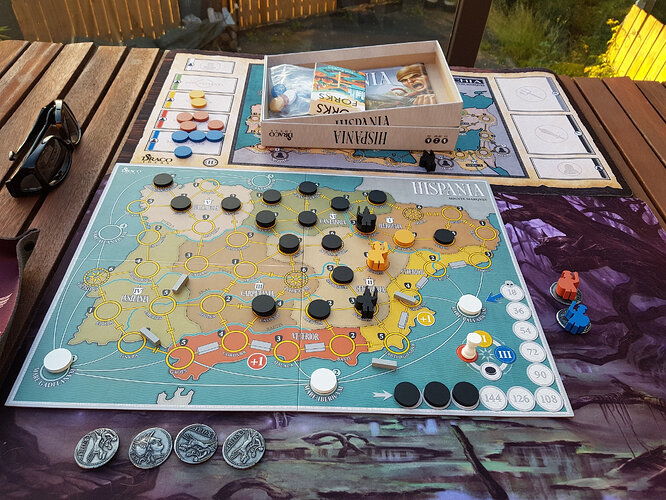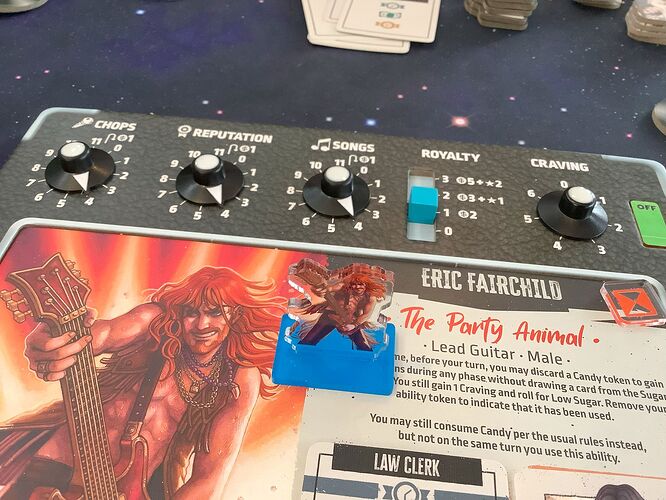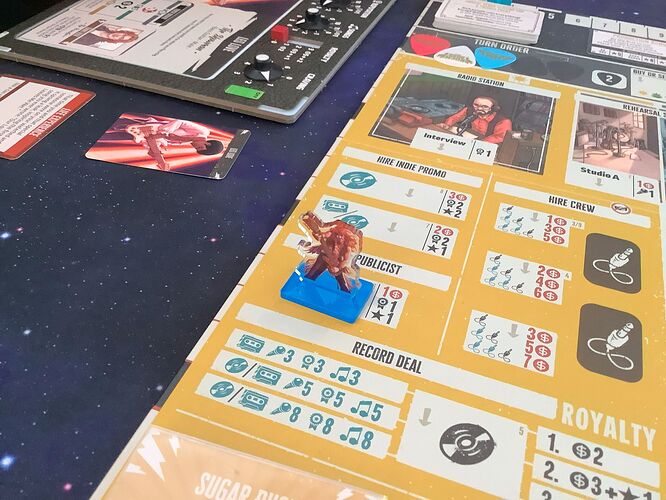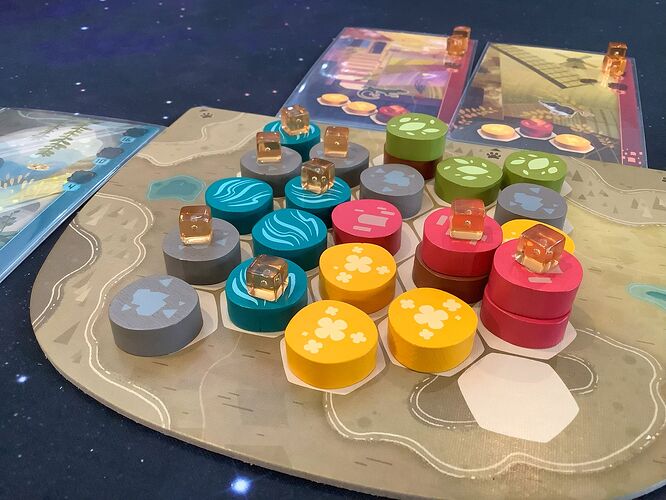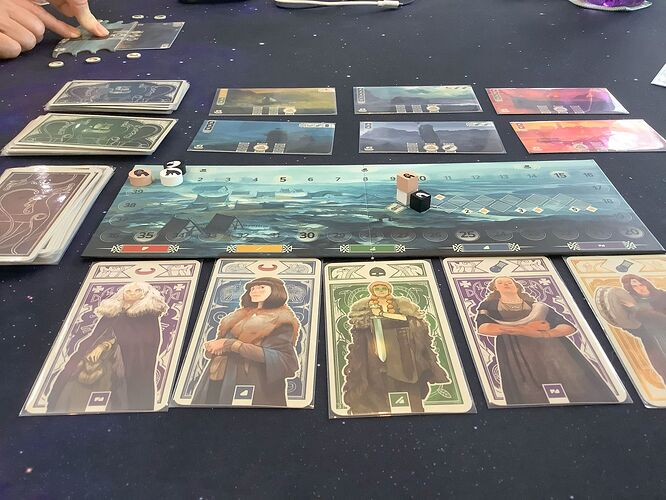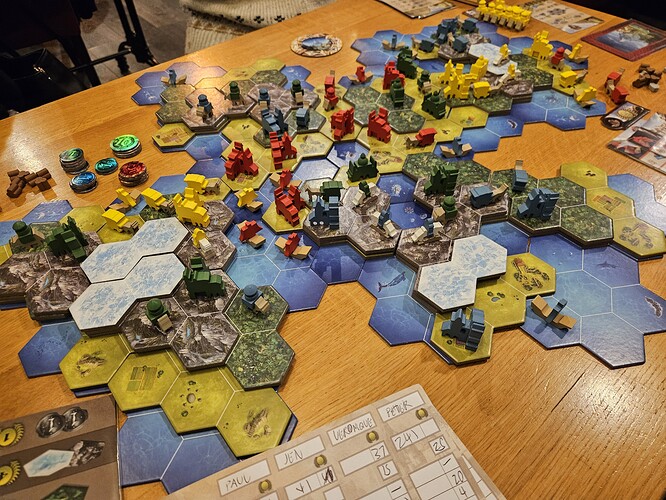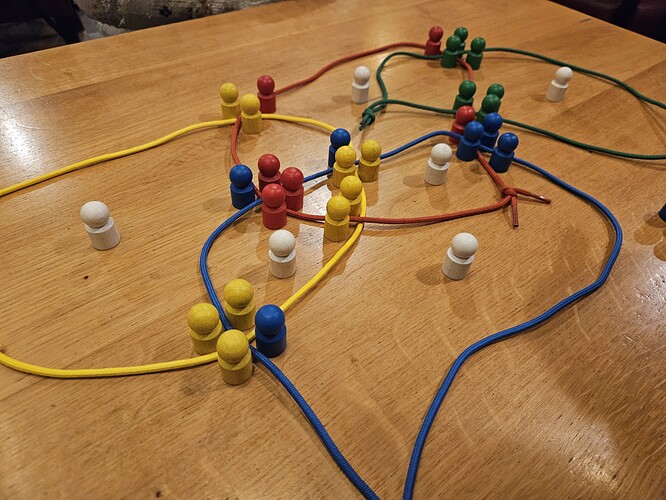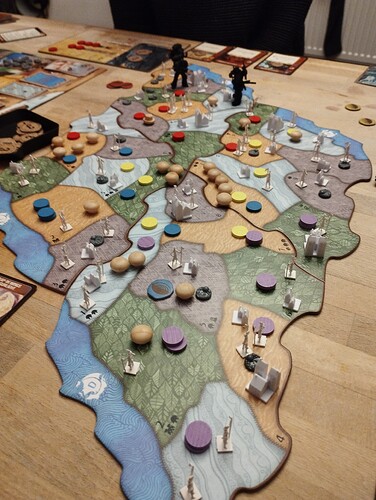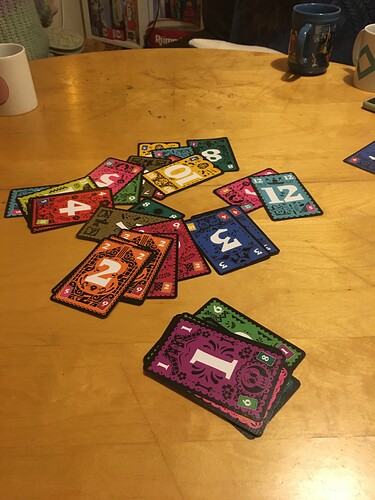Rock Hard: 1977, first play. Turn it up to 11! This was great fun. You have to balance work and being a rock star, trying to increase your chops, reputation and songs stats. I sold out and did an advert for a Japanese beer company, which dropped my songs stat down a couple, which didn’t really help me much. You need some pretty high stats to fill the bigger arenas. Pretty good fun! Not a real brain burner, but a very fun and thematic game. Loved it (despite losing badly). And we played with the game designers Spotify 70s mix (the game designer, Jackie Fox, was one of the musicians in The Runaways). And also, you can get and use “candy” (nudge nudge wink wink) for extra actions. But take too much and you’ll have to lose a turn the next day to recover.
Did I mention the dials go to eleven?
Harmonies, first play. This is a fairly abstract game where you build up tiles to satisfy cards for points. The main board is populated with five different types: grey, red, brown, green, blue, and yellow. There are rules for each type defining how you can build them. You’ll get points for types (like blue for water counts for your longest river). You will also take animal cards, which give a combination of tiles, and each time you can make that combination you add a cube from the card, and you’ll get more points the more cubes you can place. Your board fills up quickly, and every time you take tiles you’ll need to find somewhere to place them, hopefully somewhere worth points. Pretty easy game to learn, but good decisions in a pretty short timeframe. Enjoyed it – came in last place by a single point, doh!
Knarr. first play. A viking themed competitive game. On your turn you will either recruit or explore. Recruiting is taking a card from your hand and adding it to your tableau. Each card gives a reward, and you get everything in a stack for that colour. Rewards are victory points, reputation points, recruit tokens, silver bracelet tokens, and drawing a new card. Exploring means discarding cards from your tableau to take destination cards, which are added to your ship. There are three possible columns of rewards. You can trade during your turn, which means giving up bracelet tokens. If you use one token, you get all the rewards from the first column. Using two tokens gives you everything in the first and second columns. And of course using all three tokens gives you everything. So you are building up your tableau for stuff, and then discarding for more rewards. Really fun game, easy to pickup and play, but good decisions.
Gachapon Trick, first play. Ok, I didn’t know what gachapon meant. Turns out it’s a Japanese word for coin operated toy vending machines. It’s a set collection game. There are seven different types of toy, ranging from 200 yen to 800 yen. But for each colour the cost for each toy type is different. It’s a fairly standard trick taker, you have to follow suit if you can. But you can choose to follow suit from any card played, and the winner of the trick is the highest value of whatever colour has the majority. So, someone might play red, the second player is out of red, so they play blue. The third player can play either a red or a blue card. If you win the trick, you can buy any number of cards played in that trick (but you have to buy at least one). You can also top deck it and pay 500 yen. The more cards you collect of a type, the more points you get. It felt pretty different from any other trick taking game I’ve played. Good fun! I would like a better money system, I bought some paper money from Amazon, and it was just a pain to count out. Have to find some poker chip money.
